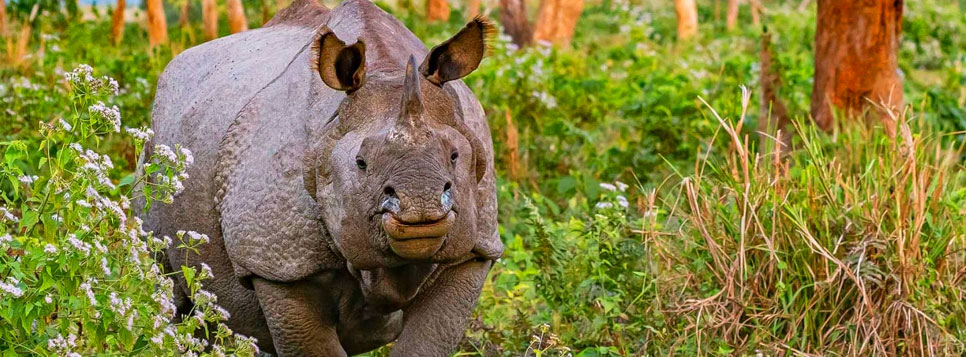Preserving the Flourishing Flora: Conservation Efforts in Jaldapara National Park
By Tushar 18/Dec/23 Nestled in the picturesque landscapes of West Bengal, Jaldapara National Park stands as a testament to the rich biodiversity of the region. The park, known for its diverse flora and fauna, is a haven for nature enthusiasts and wildlife lovers. To maintain the beauty of the flora in Jaldapara, concerted efforts in conservation and sustainable practices are essential.
1. Rich Flora Diversity: Jaldapara boasts a remarkable variety of flora, ranging from lush grasslands to dense woodlands. Sal forests dominate the park, creating a unique ecosystem that supports a plethora of plant species. The park is home to several medicinal plants, orchids, and other endemic flora, making it a hotspot for biodiversity.

2. Conservation Challenges: Despite its ecological significance, Jaldapara faces numerous conservation challenges. Human activities, such as illegal logging and encroachments, pose a threat to the natural habitat. Additionally, climate change and invasive species further stress the delicate balance of the ecosystem.
3. Protective Measures: To address these challenges, stringent protective measures have been implemented. The establishment of Jaldapara as a national park and subsequent wildlife sanctuaries around it is a crucial step in preserving the region's flora. These protected areas provide a safe haven for plant species to thrive without the immediate threat of exploitation.
4. Community Involvement: Involving local communities in conservation efforts is pivotal. Educating residents about the importance of preserving the flora helps foster a sense of responsibility. Sustainable livelihood programs, such as eco-tourism initiatives and alternative income sources, reduce dependence on the forest for livelihoods and promote coexistence with nature.
5. Research and Monitoring: Regular monitoring of flora is essential for understanding the dynamics of the ecosystem. Researchers and conservationists conduct surveys to identify rare and endangered plant species. This data aids in formulating conservation strategies and provides insights into the overall health of the park's flora.
6. Afforestation Initiatives: Afforestation is a key strategy for replenishing degraded areas within the park. Planting native species helps restore the ecological balance and enhances the overall biodiversity. These initiatives not only contribute to the beauty of the landscape but also play a crucial role in maintaining a healthy ecosystem.
7. Anti-Poaching Measures: Poaching not only affects the fauna but also has indirect consequences on the flora. The loss of key herbivores disrupts the natural seed dispersal cycle, impacting the regeneration of plant species. Robust anti-poaching measures are thus imperative for safeguarding both the animal and plant populations.
8. Climate Change Adaptation: Climate change poses a significant threat to the flora of Jaldapara. Changes in temperature and precipitation patterns can affect the distribution and abundance of plant species. Implementing climate-resilient strategies, such as promoting drought-resistant plants and monitoring climate impacts, helps in adapting to these changes.
9. Education and Awareness: Educating visitors and the local community about the importance of preserving the flora is a fundamental aspect of conservation. Interpretation centers and guided tours provide information about the diverse plant life, fostering a sense of appreciation and responsibility.
10. Biodiversity Conservation Corridors:Creating wildlife corridors connecting Jaldapara to other protected areas facilitates the movement of plant species and wildlife. This connectivity ensures genetic diversity and prevents isolation, enabling the flora to adapt and thrive in a changing environment.
11. Government Initiatives: Government support is crucial for successful conservation efforts. Strict implementation of environmental laws, allocation of funds for conservation projects, and collaboration with non-governmental organizations contribute to the overall protection of Jaldapara's flora.
Conclusion:
Preserving the beauty of Flora in Jaldapara is a collective responsibility that requires the active involvement of the community, government, and conservation organizations. By adopting sustainable practices, raising awareness, and implementing effective conservation strategies, we can ensure that the vibrant flora of Jaldapara continues to thrive for generations to come.